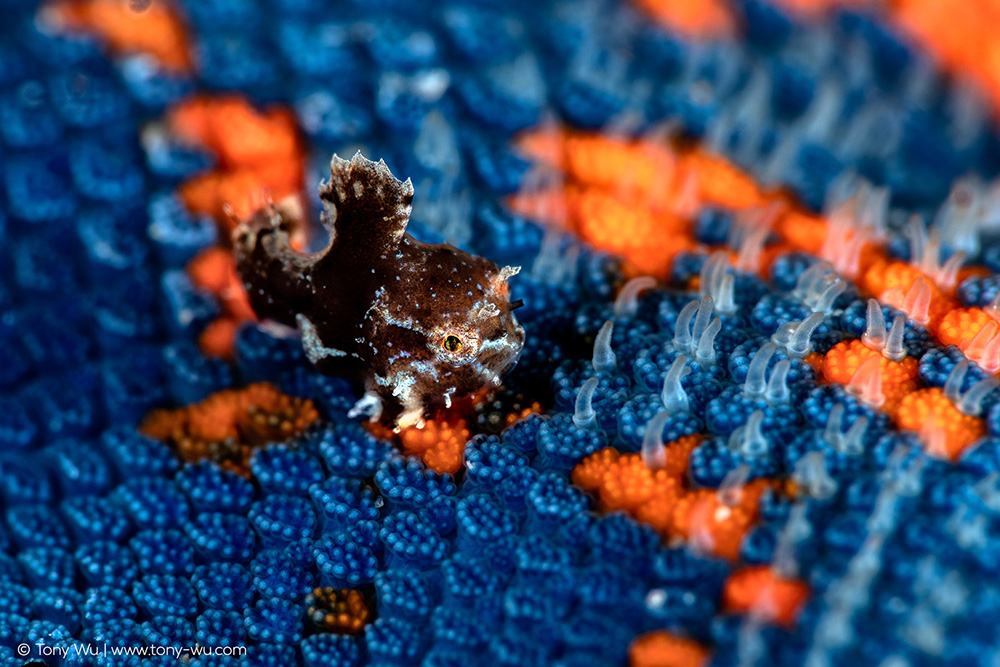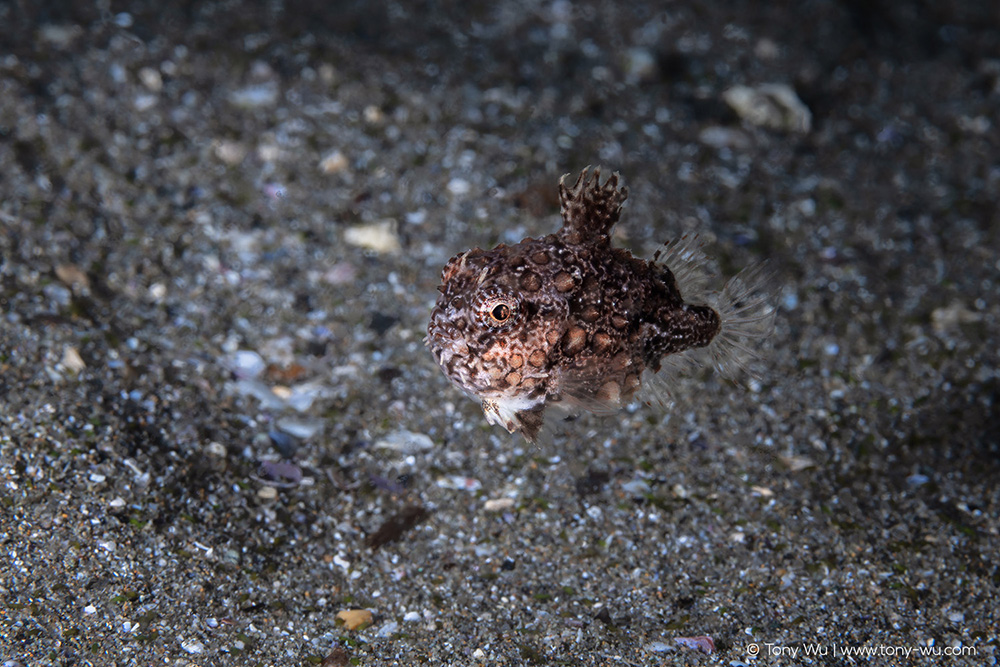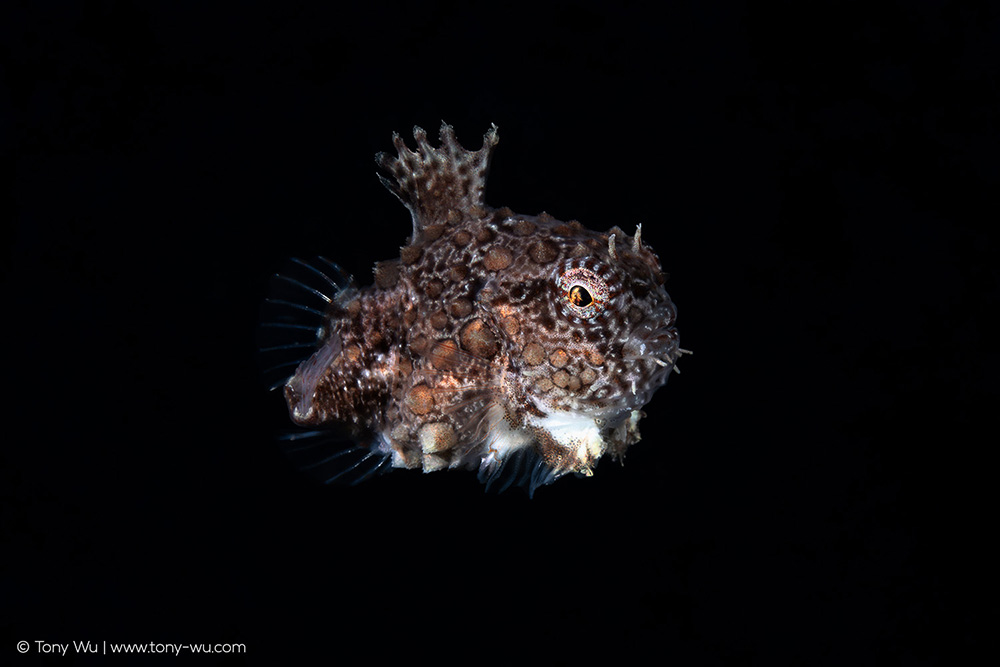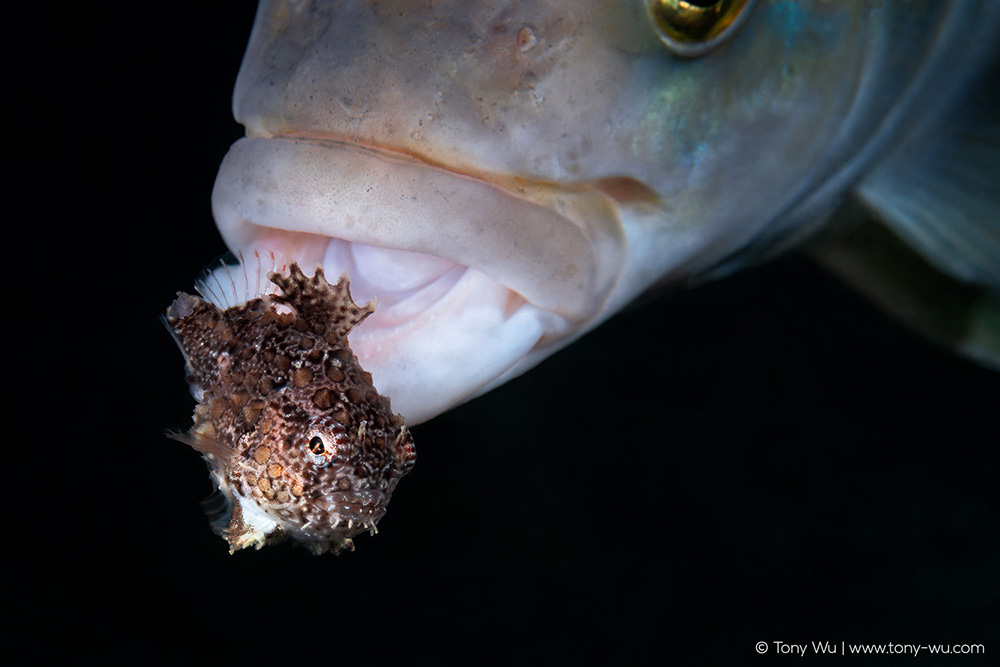For everyone reading my blog via email...I made a boo boo last week.
I had the brilliant idea of putting up a sticky post that has a sign-up form, so that it's easier for anyone who wants to read my blog by email to figure out how to do it. I did not, of course, consider that the sticky post would get sent by email to everyone already receiving my posts by email. This is what happens when I try to be clever.
At least I incorporated a photo of a cute fish. I hope that offset the blunder a bit.
The photo in my sticky post is of a baby Eumicrotremus taranetzi lumpsucker. It was something on the order of 3mm. Here is another photo of a juvenile, this one on a blue bat seastar (Patiria pectinifera):

When these adorable little fish grow up, they reach something in the range of 5-6cm in size. They retain their finely honed dumpling physique as well:

This individual was well-camouflaged in the sandy-rocky area where I came across it, as you can see from the above image. They apparently come in a range of shades. I hope to meet a more colourful individual at some point.
Getting low to the sand makes it easier to see the outline of the fish:

These fish cling to rocks, shells, any solid surface that they find convenient, by using a suction-cup-like structure on their ventral surface, hence the common name lumpsucker (lump referring to their appearance, sucker referencing their ability to cling to things). The suction cup derives from modified pectoral fins, a wonderful example of nature making use of existing anatomy for a new, customised purpose.
Despite their anything-but-hydrodynamic appearance, these fish are excellent swimmers. They are remarkably mobile in fact. This one went from rock to rock, settling for a while, then moving on, as if searching for something. The perfect place? Food? A friend? Difficult to know.
I had a huge shock at one point when an Okhotsk atka mackerel (Pleurogrammus azonus) came out of nowhere and swallowed the dumpling!

It all happened so quickly that my brain was unable to process the action. All I registered was a blur, then no dumpling. I looked everywhere—up, down, side to side, behind me even—no lumpsucker. Until I saw, out of the corner of my eye, a mackerel stop abruptly mid-swim. It looked uncomfortable. It convulsed. It spit-out my dumpling friend. Whew.
I moved closer, confirmed that the lumpsucker was ok. Within short order, the little fish commenced swimming around again in search of whatever it had been searching for, as if nothing had happened.
It wasn't until later, when reviewing images, that I saw the photo above. My shutter-finger must have bypassed my cognitive bottleneck brain, because I have no memory of seeing this moment, much less deciding to press the shutter.
I guess these particular dumplings aren't good to eat.